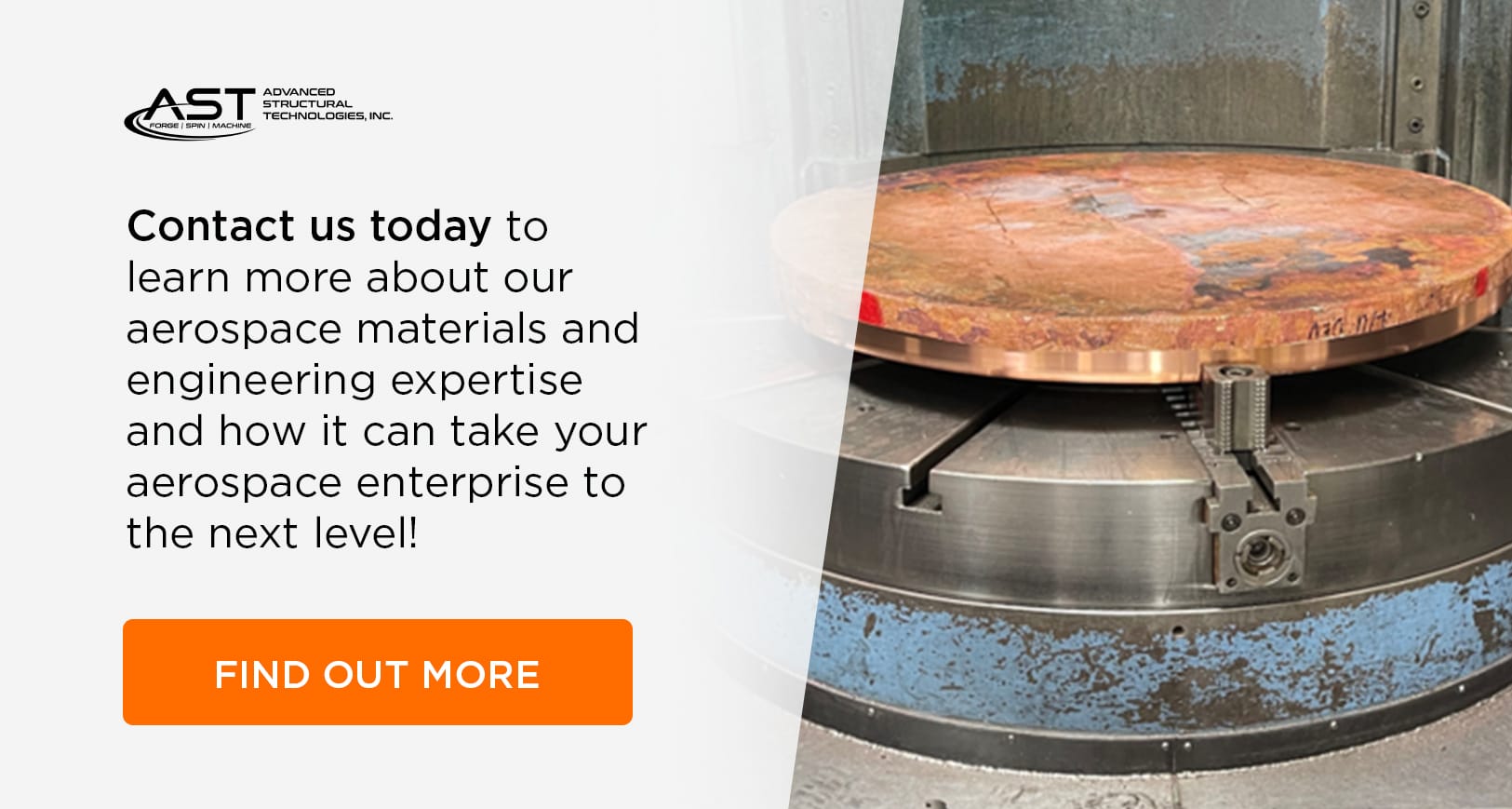How Aerospace Materials Advanced. Past, Present, Future
How Aerospace Materials Advanced. Past, Present, Future
 The phrase, “it’s not rocket science,” works in most settings, but not when talking with people in the aerospace industry. For them, it is rocket science!
The phrase, “it’s not rocket science,” works in most settings, but not when talking with people in the aerospace industry. For them, it is rocket science!
Operating in aerospace—whether within the Earth’s atmosphere or further afield in outer space—poses unique challenges. Airplanes, space shuttles, and manmade satellites aren’t easy to get off the ground and keep off the ground. It takes tremendous amounts of energy, which means materials need to be as light as possible; it also takes a lot of speed to escape Earth’s gravity, which means materials need to be as strong as possible; traveling at the fringes of the atmosphere or in outer space involves exposure to higher levels of radiation and extreme temperatures, meaning materials need to have properties that can withstand such radiation and temperatures.

Lighter, faster and stronger materials give nations and private enterprises crucial advantages when operating in aerospace, and so it’s probably no surprise that billions and billions of dollars have been spent around the world over decades on researching, developing, producing and improving aerospace materials.
Today, there are a wide variety of advanced aerospace materials available for government, industrial and even private use. Selecting the right aerospace materials for a given enterprise can have critical impacts on the outcome of that enterprise and fundamentally change its likelihood of success. Unfortunately, it can be overwhelming and daunting to determine which materials are right for which endeavor. This article is your ultimate guide on the evolution of aerospace materials over time—how they developed, got better, and adapted to the market’s current needs.
Why is materials selection important in aerospace applications?
Materials selection is so critical for aerospace applications because the extreme speed, temperatures, radiation, material stress and other factors that are inherent in aerospace travel require materials that won’t break apart flying through the air or burn up on reentry into the atmosphere. Aside from the safety elements, certain materials that are lighter and stronger can be more economically efficient to use from a fuel cost standpoint.
Qualifying materials for aerospace requires first determining what physical properties are required for the particular application and verifying whether available materials possess those properties to an adequate degree. Note that there are likely multiple properties any given material may need to possess in order to be suitable for use in aerospace. For example, the material used for the fuselage of an aircraft should be both strong and light.
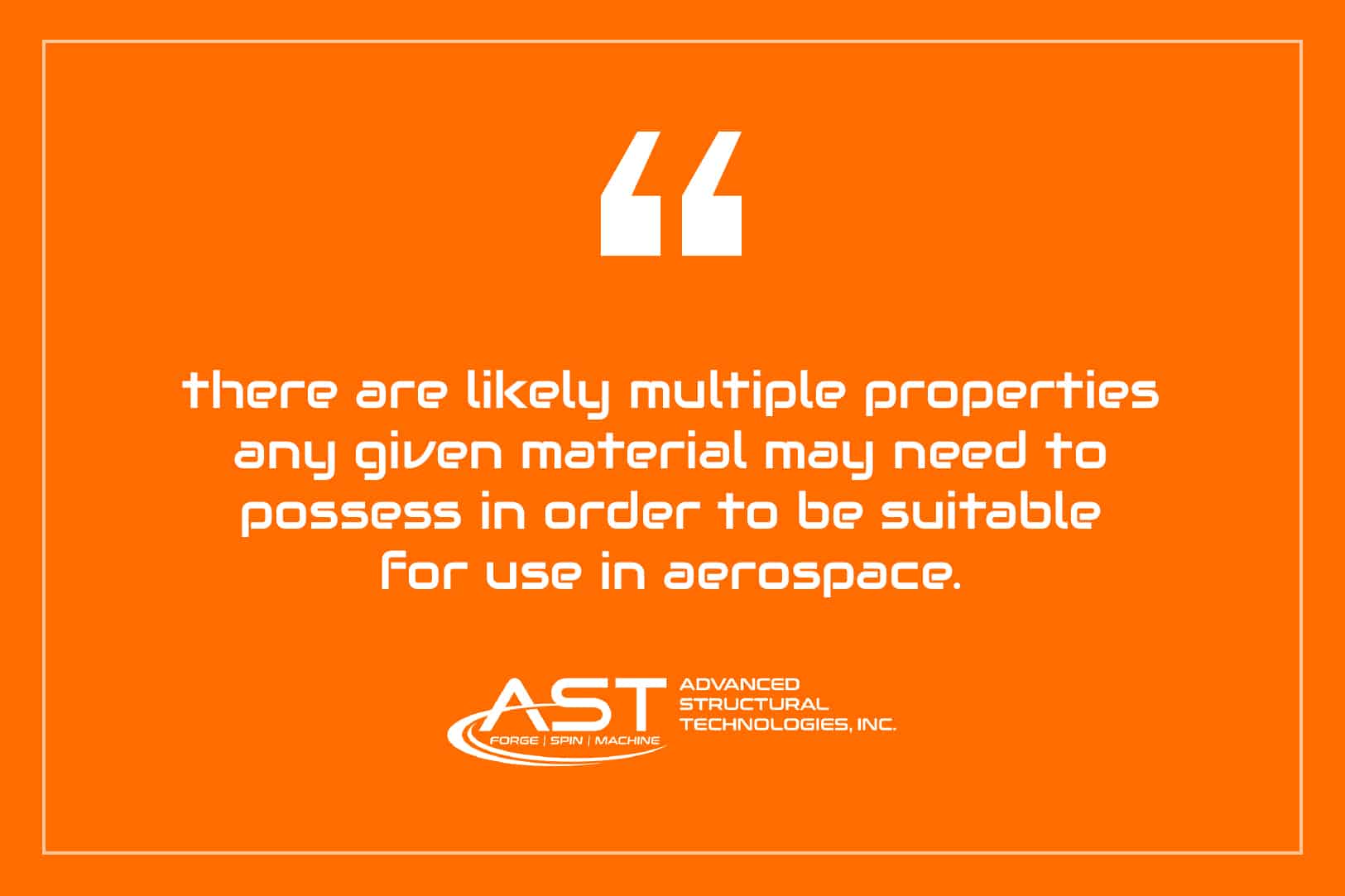
Aerospace materials testing involves quantifying those properties. For example, manufacturers or researchers test for things like fatigue, fracture, compression, impact resistance and others. Quantitative values like how many pounds-per-square-inch (PSI) a material can withstand are recorded and compared against the acceptable levels for various forms of aerospace travel.
What are aerospace grade materials?
The term “aerospace grade” means that the applicable material or process is suitable for use in aircraft—which could mean planes, helicopters, satellites, drones, or other aircraft. Given the rigors of aerospace travel, this necessarily means materials that can stand up to those rigors.
Aerospace grade materials are therefore those that have high enough strength-to-weight ratios, corrosion resistance, and other qualities to be suitable for use in aircraft. Aerospace grade can be thought of as a range. Materials or components that are suitable for use in a helicopter may not be suitable for use in a commercial jet, let alone spacecraft.
List of aerospace materials
There are a variety of aerospace materials in use today and some that have been used for over a century. These may be special chemical compounds—such as composites—or particularly high-quality subsets of particular materials—such as aerospace grade aluminum or titanium.
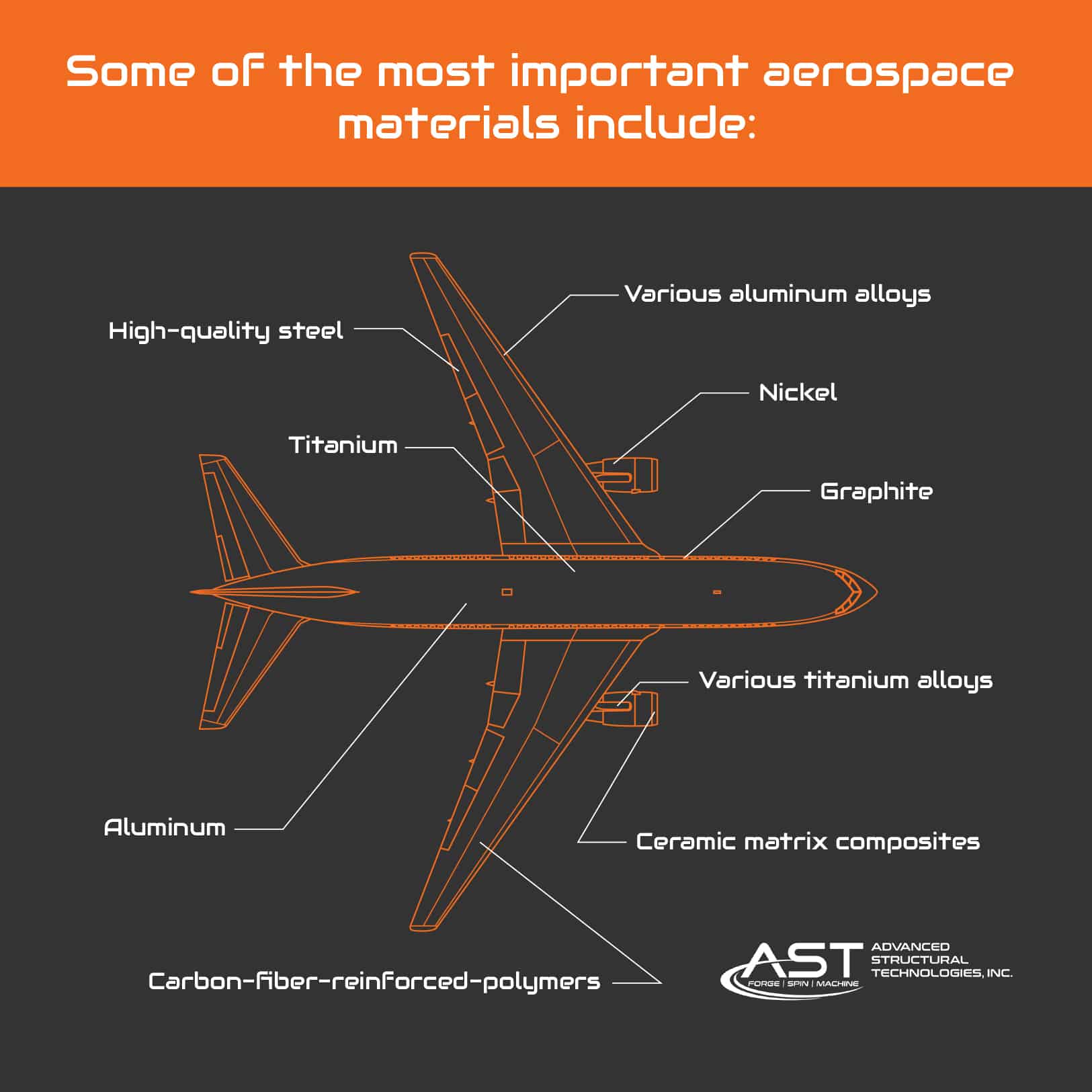
Some of the most important aerospace materials include:
- Aluminum
- Various aluminum alloys
- Titanium
- Various titanium alloys
- Carbon-fiber-reinforced-polymers
- Graphite
- Nickel
- High-quality steel
- Ceramic matrix composites
Researchers are continually looking for new and better composites and alloys that are lighter, stronger, cheaper, less prone to corrosion and superior in a variety of other aspects.
Aerospace materials in the past
Historically, a variety of materials have been used in aerospace travel. Early aircraft were constructed largely of wood, fabric, and twine. As aerospace technology advanced, metals like steel and aluminum allowed aircraft to greatly increase performance.
Aircraft aluminum
Aluminum has been a miracle material, literally for centuries. It has been able to be reliably produced starting in the late 1800s. Aluminum is great for aerospace because it’s not only light and strong but also highly resistant to corrosion. It also is very resilient in the face of UV radiation, which is particularly important as crafts reach greater elevations or leave Earth’s atmosphere altogether.
Aluminum is also incredibly abundant on Earth, making up slightly over eight percent of the Earth’s crust. This means it’s relatively cheap compared to steel and especially titanium.
Aerospace alloys
While aluminum in its pure form has some great qualities, humans have long understood the value of alloys—combinations of one or more metals—in using different materials to complement each other’s strengths. Early aviation pioneers were quick to explore the use of aluminum alloys in improving the quality of aerospace materials.
Early aluminum alloys in aerospace include those used in Germany’s Junkers J1 monoplane in WWI, which used an aluminum alloy that also included copper, magnesium, and manganese.
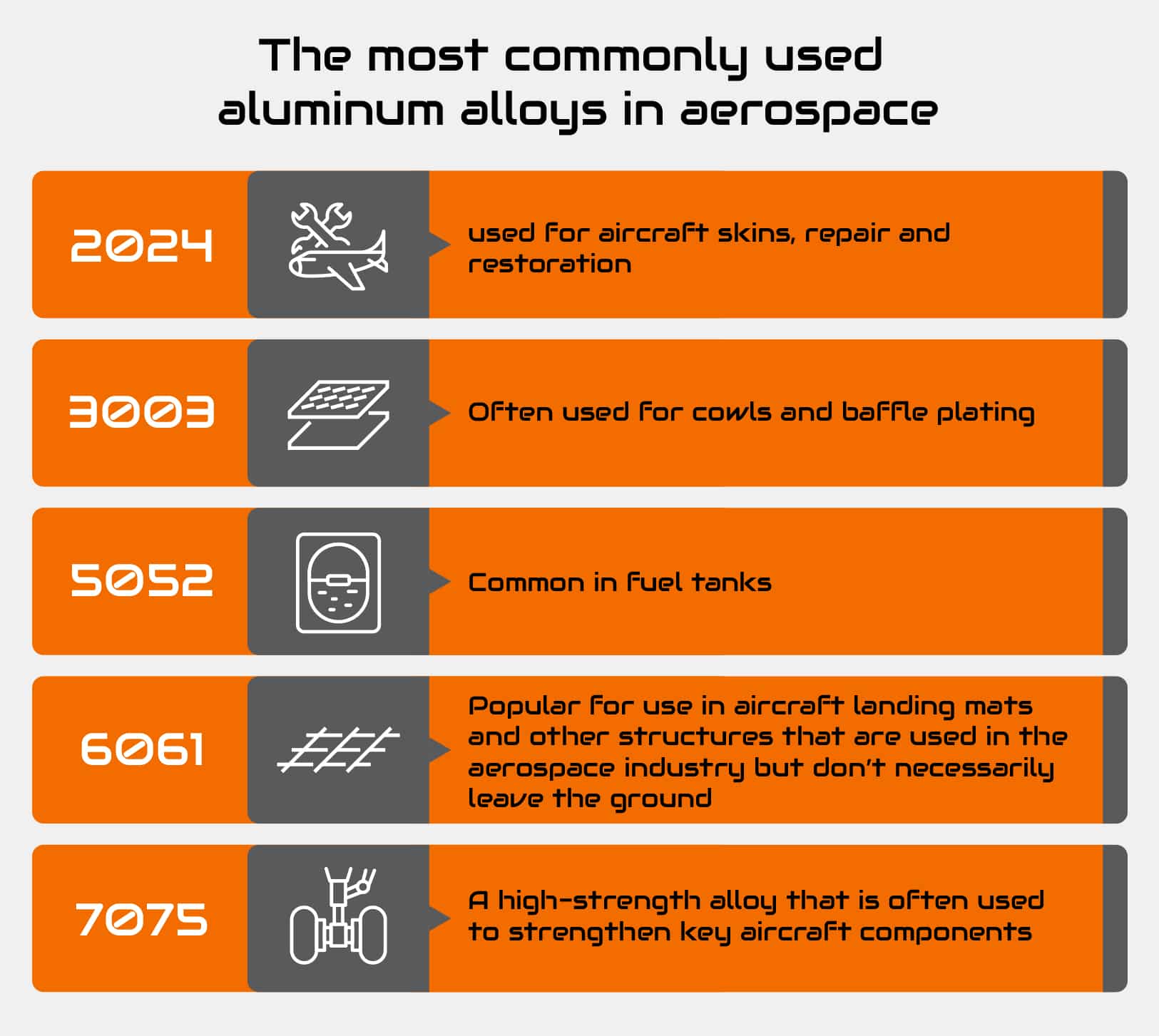 Today, the most commonly used aluminum alloys in aerospace are:
Today, the most commonly used aluminum alloys in aerospace are:
- 2024 – used for aircraft skins, repair and restoration
- 3003 – often used for cowls and baffle plating
- 5052 – common in fuel tanks
- 6061 – popular for use in aircraft landing mats and other structures that are used in the aerospace industry but don’t necessarily leave the ground
- 7075 – a high-strength alloy that is often used to strengthen key aircraft components
Aluminum and aluminum alloys are currently the most commonly used metals in the aerospace industry, but certainly not the only ones.
Titanium in the Aerospace Industry
Titanium and titanium alloys are also extensively used in aerospace due to their excellent qualities. Titanium, like aluminum, has a great strength-to-weight ratio and is highly resistant to corrosion. Titanium also holds up extremely well in the extreme environs of outer space, meaning titanium has been a huge asset in the advance of space exploration.
Aerospace materials in the present
Composite materials in aerospace
Metals are not the only materials useful for or widely used in the aerospace industry. Another category of aerospace materials is generally referred to as composites. Composites, as the name suggests, are materials composed of two or more constituent materials whose strengths complement one another and make up for inherent weaknesses in the materials when used individually. Common composites in everyday life include particle board or steel-reinforced concrete.
There are three primary types of composites common in the aerospace industry today: carbon fiber, glass and aramid-reinforced epoxy. There are others as well.
Future aerospace materials
While engineers and researchers have already developed some incredible aerospace materials, the search continues for newer and better options. Research is continuous on different alloys and composites which can create stronger, lighter, more corrosion resistant materials and—ideally—cost less as well.
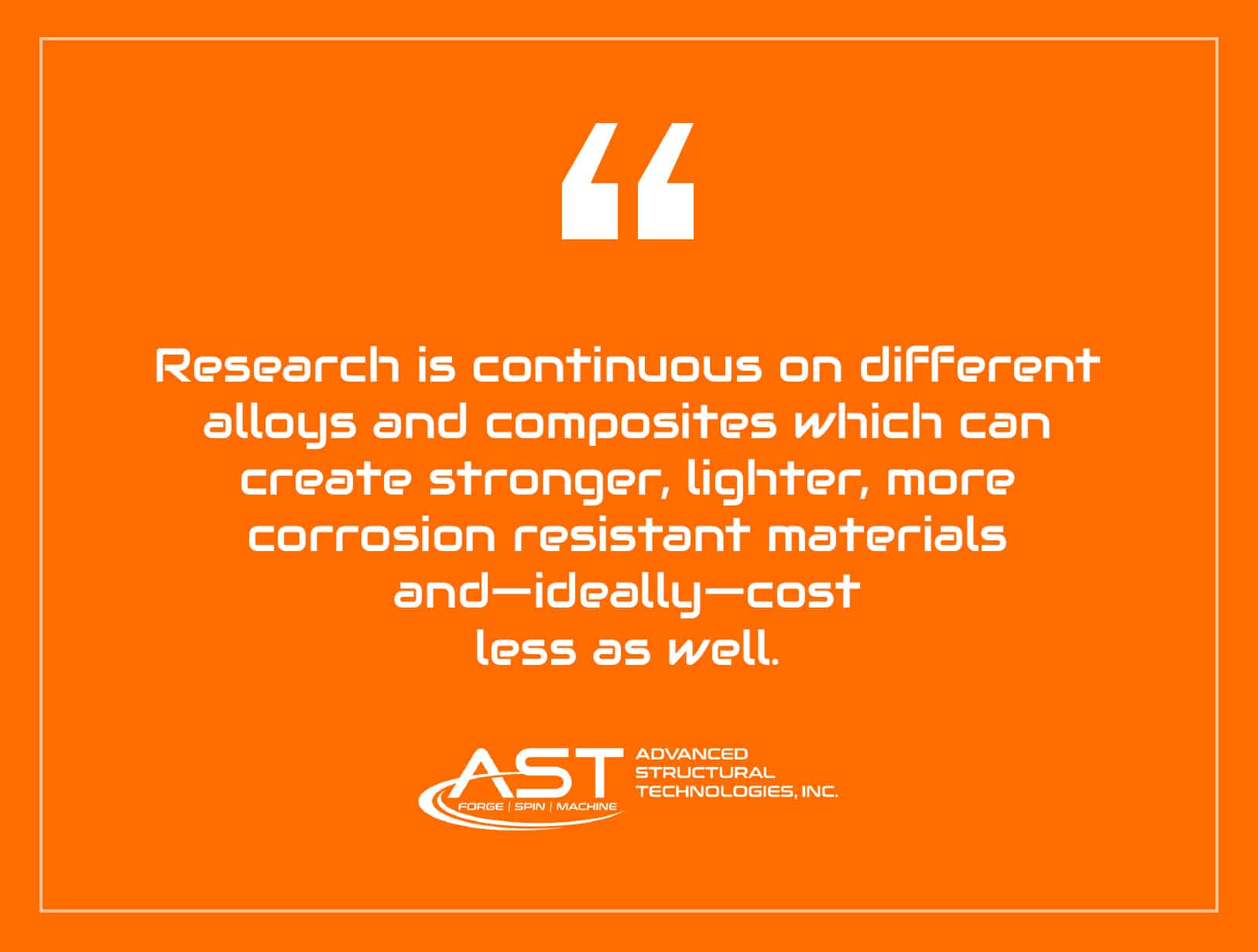
But it isn’t just alloys and composites researchers and engineers are studying for the future of space aerospace.
Nanoparticles
Another promising category of materials is known as nanoparticles. Nanoparticles are tiny particles that are somewhere in size between atoms and molecules and are typically between 1 and 100 nanometers in diameter.
Nanoparticles’ small size gives them unique properties and applications, such as the ability to saturate larger, bulk materials to create a kind of composite, such as metal-matrix nanocomposites.
Graphene
Graphene is another promising material that is seen as having increasing importance in the aerospace industry. Many people are probably most familiar with graphene from its use in pencil “lead.” Graphene is not actually lead, however, it’s a carbon compound that is special for the thin sheets that make up its chemical structure. This characteristic—in which layers of graphene as thin as individual atoms sit on top of one another – is what makes graphene useful in pencils: thin layers flake off and transfer onto pieces of paper as the material is pressed down.
But graphene’s use in the future of aerospace goes far beyond pencils. This material’s shape also makes it an excellent electrical conductor, which may lend itself to many uses in support of the various electronic equipment necessary in modern and future aircraft.
Aerospace materials engineering
Given the demands on aerospace materials, it’s not surprising that aerospace materials engineering is a highly specialized field. Aerospace engineers need to not only understand the variety of aerospace materials available but also how those materials can be used in aircraft to maximize efficiency, performance and, above all, safety.
AST’s engineering technology and streamlined manufacturing processes deliver the most critical portions of rockets, spacecrafts, missiles, and other components to the aerospace industry for aviation and space applications.
Our team has mastered the hot forging and forming of thick materials, as well as the cold forming of thin-walled, super-light parts. We support complex geometries, non-standard shapes, larger, lighter, using a variety of exotic alloys…delivered in one-piece…enhanced strength, durability, and performance. Our in-house engineering, flexible operations, and a catalog of experience allow for rapid development and delivery.
Aerospace is a unique and special industry that involves harnessing tremendous amounts of energy to move manmade craft off the ground and even into outer space. In order to reduce costly energy use, materials need to be light; but due to the extreme speeds and pressures involved in aerospace, they also need to be strong to stand up to extreme levels of radiation and temperature. Early aviation relied on tools that have been used by humans for millennia—wood, twine, fabric, etc. As the demands of aerospace travel increased and aerospace technologies improved, metals, metal alloys and various types of composites have become essential to the aerospace industry. Extensive research and testing continues to strive for ever greater aerospace materials to continue to drive human endeavors in aerospace.
Contact us today to learn more about our aerospace materials and engineering expertise and how it can take your aerospace enterprise to the next level!



